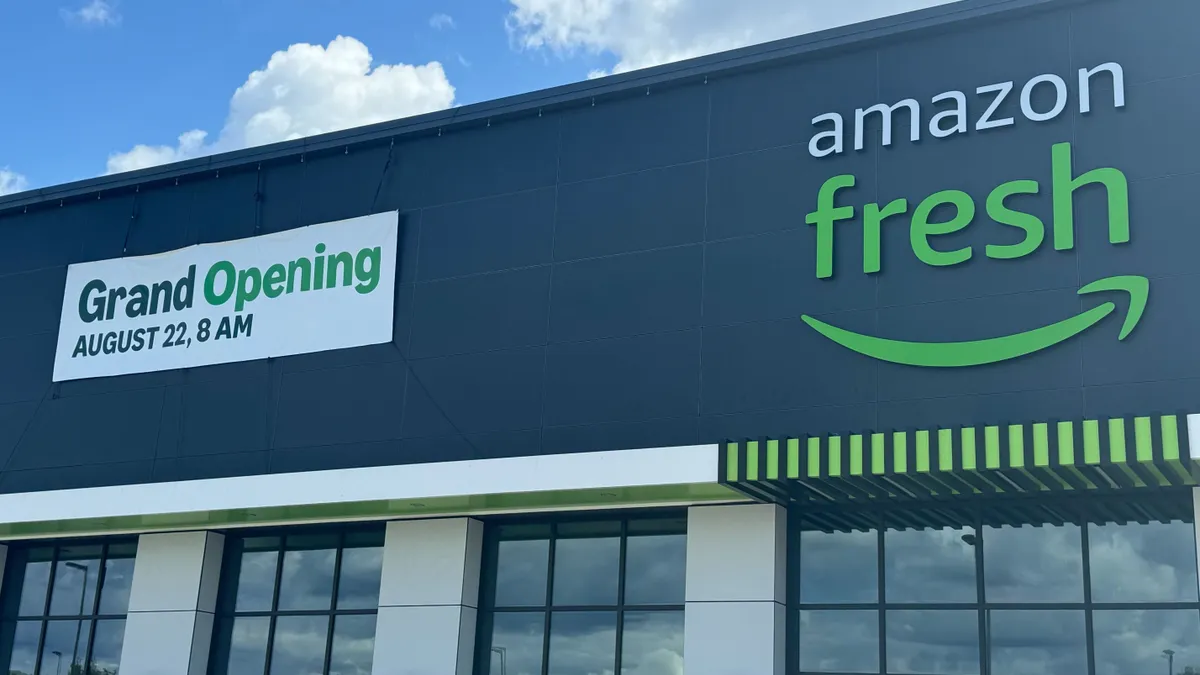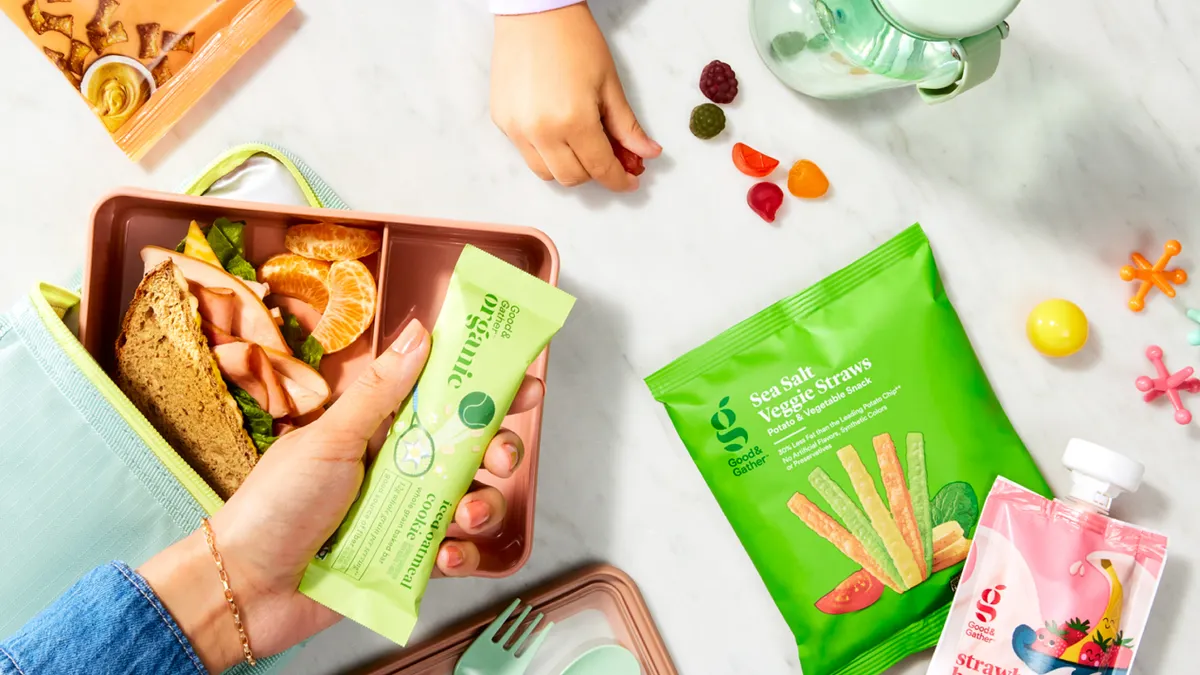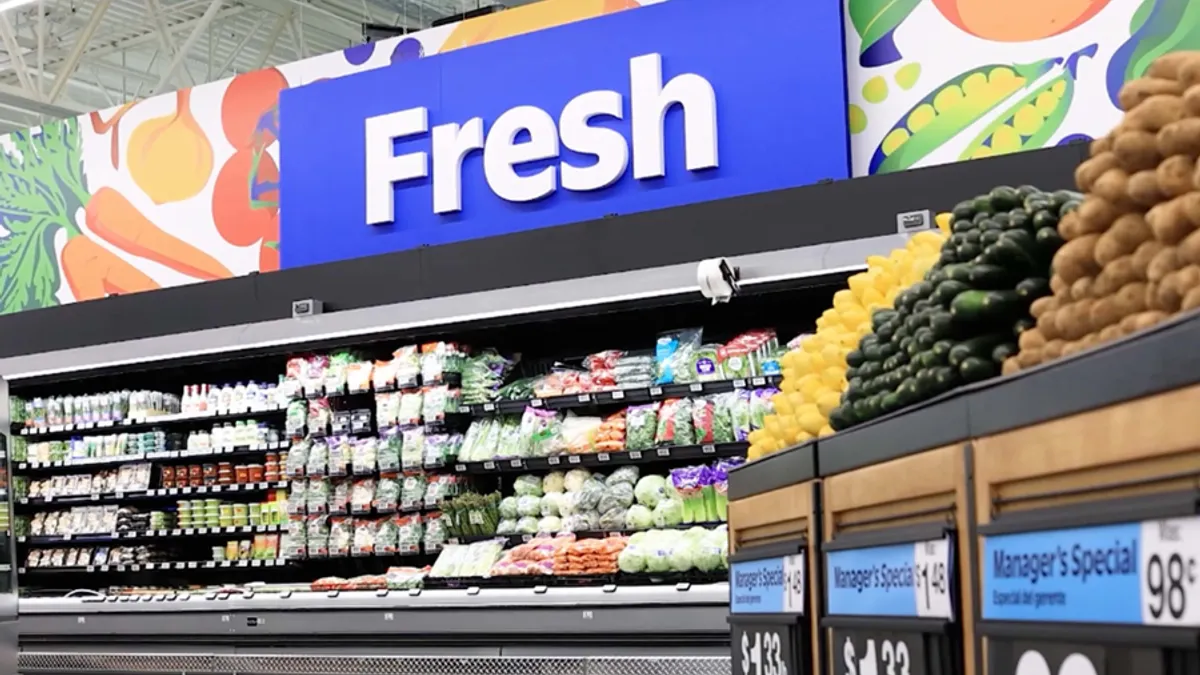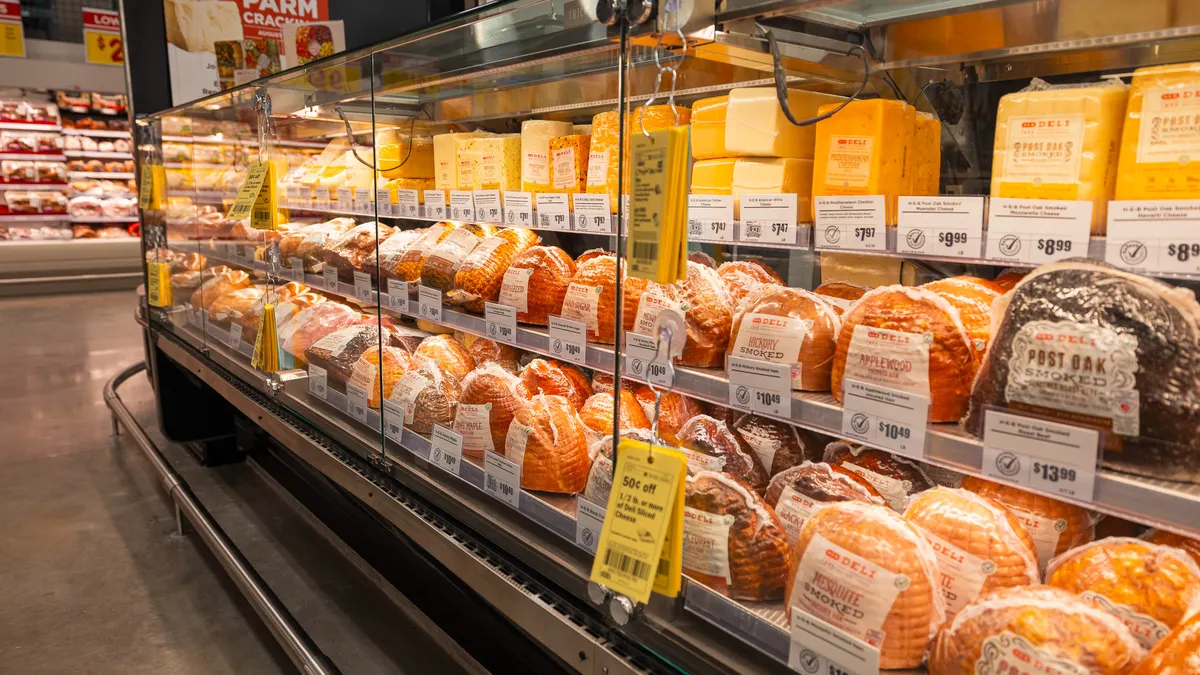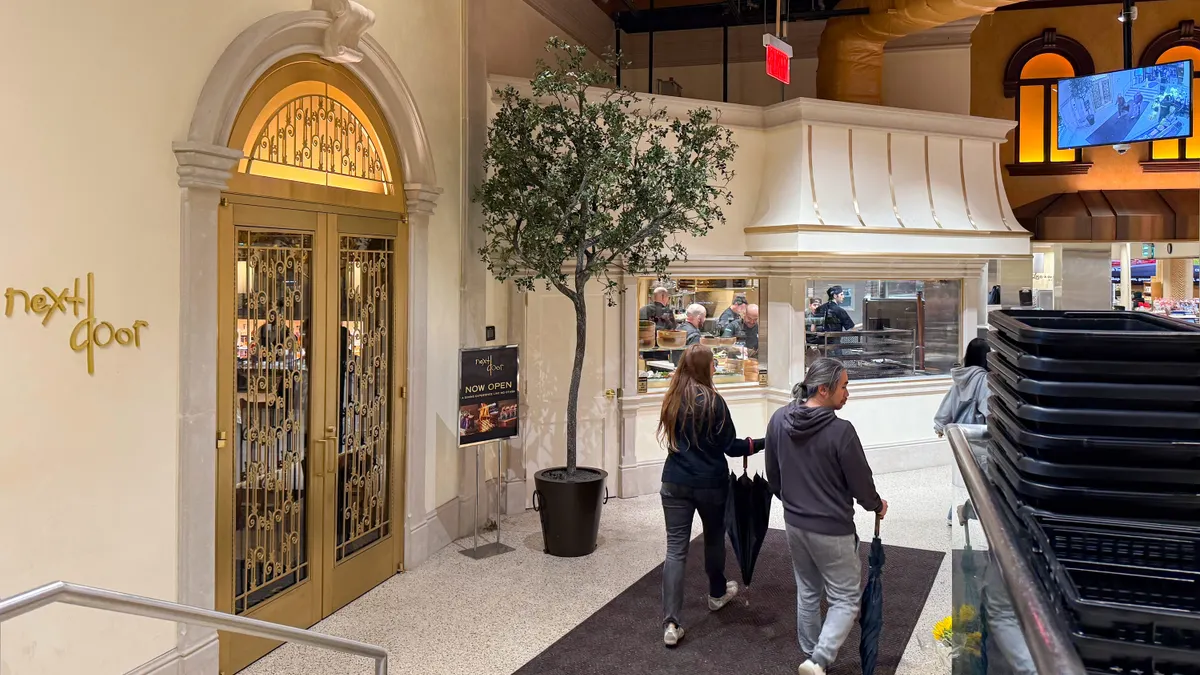Several weeks after the rapid-fire bankruptcies of Fairway Market, Lucky's Market and Earth Fare, specialty grocers are getting a critical look from investors and the industry.
Each chain has faced its own unique challenges, but there are enough commonalities to invite serious questions about the model. They all struggled to expand beyond their core markets. And in the case of Lucky's and Earth Fare in particular, they failed to differentiate from traditional competitors as well as discount formats like Walmart and Aldi.
Investors don't see much to like. Over the past year, stock prices for Sprouts Farmers Market and Natural Grocers by Vitamin Cottage — two of the leading specialty chains left — have dropped by around 30% and 50%, respectively.
Industry experts, meanwhile, aren't ready to write off specialty grocers. But companies need to take a hard look at their assortment and positioning in the marketplace, they said, and be open to a refresh. And they need to realize that the rapid growth that worked for the likes of Whole Foods more than a decade ago needs to be supplanted with a more careful, rational approach.
Traditional grocery metrics and private equity
With so much instability among specialty players, it would seem customers are souring on the format. But Kevin Kelley, founder and principal at retail architecture firm Shook Kelley, believes that isn’t the issue.
"Every bit of evidence we get says [customers] want smaller, healthier, more premium-esque stores," Kelley told Grocery Dive of his research. He said shoppers want stores in prime locations that are easy to shop.
Two key missteps have led to the recent demise of specialty banners, he and other experts told Grocery Dive.
First, as these stores seek to supercharge their growth, Kelley said, they often bring in traditional grocery experts who try to professionalize the stores and emulate traditional retailers. And these experts often use conventional grocery metrics for sales volume, store traffic and more to evaluate the specialty chain.
"They’re comparing it to a full-size store," Kelley said. "And [specialty grocers] really need to stick to what they are, which is a small format."
"Behind every one of those stories is someone with a financial engineering strategy and a private equity approach and a grocery store best practices professionalization angle."

Kevin Kelley
Founder and principal, Shook Kelley
Additionally, when grocers turn to private equity, as Fairway and Earth Fare did, they risk expanding too quickly and losing control over their concept. Private equity may mean an influx of cash, but analysts say it too often pushes specialty retailers away from the business model that made them successful in the first place.
Chains like Earth Fare, Lucky’s and even Dean & DeLuca started off strong, Kelley said, but once they let private equity in, it quickly changed how the stores looked and operated.
"Behind every one of those stories is someone with a financial engineering strategy and a private equity approach and a grocery store best practices professionalization angle," Kelley said.
Jay Jacobowitz, president with Retail Insights, shared similar sentiments about Earth Fare and Fairway seeking out equity investments. He noted Earth Fare was one of the first to do so in 2006, with a goal of becoming big enough to compete with Whole Foods.
With Fairway, Jacobowitz said the company lost its way when Sterling Investment Partners, which bought an 80% stake in the company in 2007, tried to take a hip, urban grocer and move it out to the suburbs, where its wide-ranging assortment didn’t resonate.
"For the independent and the small regional, the advice is just don’t get too far out over your skis," Jacobowitz said. "If you take in equity capital … watch out."
One specialty retailing veteran, who asked to remain anonymous because of his ties to the industry, put it even more bluntly: "Steer clear of private equity if you're a retailer," he said. "I attribute much of the demise of Fairway and Earth Fare to venture capital. They promised them the moon and then bled them dry."
Traditional retail versus specialty grocery
While some high-end specialty grocers like Erewhon in Southern California are reveling in their respective regions, others, like Fresh Thyme Farmers Market and The Fresh Market, face major competition not just from one another, but from traditional grocers that have expanded their specialty, natural and organic assortment.
Tory Gundelach, vice president of grocery for Kantar Consulting, told Grocery Dive she thinks this year's bankruptcies attest to conventional grocers' ability to offer better prices and a more convenient setting for these products. Most consumers don't shop entirely natural and organic, and at chains like Kroger and Safeway they can find these items along with staples like Cheerios and Coca Cola all under one roof.
"You’re left at the end of the day asking yourself, 'If I’m a shopper, why would I go to one of these specialty, natural and organic retailers?'" she said.
Gundelach also notes, however, that there will always be a segment of dedicated shoppers who seek out specialty banners.
"I would never say specialty, natural-organic players are going to go away, but I think the market for that is somewhat limited in the way that the retail landscape is currently playing out," Gundelach said.
Kowalski’s Markets, a small format grocer that operates 11 stores in the Twin Cities metro area in Minnesota, has made a name for itself by offering a compelling store experience and maintaining a neighborhood feel, said CEO Kris Kowalski Christiansen, whose parents founded the company in 1983.
"We’re still having positive sales for like stores year over year," she told Grocery Dive.
About 90% of the products in stores are produced in-house, Christiansen said, to ensure quality. The grocer has a central kitchen, a central bakery and a central meat facility where it can manage its own supply and production. Additionally, for most products it carries there is a conventional option, a natural option and a specialty option.
Boyd Oase, Kowalski's vice president of operations, said the company has focused on measured, store-by-store growth rather than setting lofty expansion goals.
"There are times where we think we could do some things that could help us, in the short-term, benefit for growing sales or profit or whatever it is, but if it doesn’t fit who we are fundamentally, we just don’t do it," he told Grocery Dive.
While stores span 12,000 to 48,000 square feet, most Kowalski’s locations fall somewhere around 25,000 square feet. Each store features a Starbucks as well as specialty departments like gifts and floral. The company carefully plans stores’ aesthetics, including flooring, wall color, lighting and the use of marble and stainless steel to convey a premium image.
The grocer's family-owned and operated structure makes it nimble and gives it the flexibility to be creative and innovative, Oase said. Additionally, Christiansen said the company knows its shoppers come to the stores to escape the traditional format.
Still, Kowalski's understands it needs to push outside its comfort zone in order to stay relevant. The company has signed a lease for a lease for a 30,000-square-foot store inside the local Rosedale Center mall, and is expected to sign on for a second shopping center location, as well, the Star Tribune reported. The first location is expected to open in 2022.
"I think we’re staying relevant that way, by just continuing to evolve our brand," said Christiansen. "It’s something that people trust and so they tend to stick with us through all the changes in the marketplace."
Where does Sprouts fall in the mix?
Sprouts, which has been one of the fastest-growing competitors in specialty and natural grocery in recent years, currently has 340 stores in 22 states, and many experts are watching the chain as it shifts its priorities under new leadership.
"I’m worried about Sprouts," Jacobowitz said. He noted that CEO Jack Sinclair, who stepped into the role last June after leading discounter 99 Cents Only, has been looking to cut expenses and slow expansion, which Jacobowitz thinks could impact some of the departments that are important to shoppers like deli, grab-and-go foods and seafood.
Still, Sprouts has a lot of wasted floor space in its stores, Jacobowitz said. And Aldi and other hard discounters are encroaching on Sprouts’ territory as they expand into more fresh foods and produce, pressuring the Phoenix-based retailer to lower its prices and operating expenses.
Sprouts declined an interview with Grocery Dive, citing a quiet period around its most recent earnings release. During that earnings call, Sinclair said the company has focused recently on in-store displays that differentiate the grocer.
"If the competition zigged, we zagged. In our core fresh categories, we focused less on commodities and more on our strengths in assortment," Sinclair said.
Gundelach said she thinks Sprouts resonates with the general population and the "average Joe" shopper, which is important for long-term success.
"I do feel fairly confident that Sprouts will be able to understand what is that next step for them," she said. "I don’t think they’re in a dire situation. I think it’s that retooling and understanding what's next to drive incremental growth."
Natural Grocers by Vitamin Cottage has steadily grown its store count to more than 150 locations, and has focused on health-related services and building incremental sales among its most dedicated shoppers through its {N}power loyalty program. But the company's sales growth has faltered as conventional chains have stepped up their assortment of natural, organic and gourmet products.
“It’s not growing as fast as it used to,” Kemper Isely, the company's CEO, told The Wall Street Journal.
"I do feel fairly confident that Sprouts will be able to understand what is that next step for them. I don’t think they’re in a dire situation. I think it’s that retooling and understanding what's next to drive incremental growth."
Tory Gundelach
Vice President of grocery, Kantar Consulting
Rational growth and staying relevant with shoppers
Given the obstacles and recent track record of specialty banners that grew quickly, specialty grocers that operate fewer stores and grow steadily within a defined region may have better odds of success.
Gundelach said these smaller players are better positioned to offer a tailored, localized experience for each store, while larger retailers like Kroger will struggle to adapt and customize the shopping experience even if they do carry natural, organic and specialty items.
"I would say that can be a lot easier to do when you have a smaller scale. Some of the chains with just a handful of stores might be in a good spot," Gundelach said.
According to Kelley, it’s important that small formats stay true to their niche and try not to grow too big. It’s also vital that they take a concept-based approach if they want to stand out to shoppers. He mentioned Kowalski’s as a player that is doing the small, specialty format better than most.
"There are not a lot of small grocery stores out there right now," Kelley said. "I don’t look at that as a negative thing, I look at it as an opportunity ripe for plucking, or at least investing in."
Specialty chains can remain relevant with shoppers, but they need to steer closer to their service-oriented, natural and organic roots, said Tim Sperry, a former executive with Whole Foods who now consults in the specialty industry.
Sperry cited a Vermont-based grocer on whose board he currently serves. The company worried after Trader Joe's opened across the street from one of its locations, but it didn't try to dilute its premium image and high product standards. It ultimately benefited from the increased traffic Trader Joe's brought to the neighborhood.
"You really have to understand your specific market and what you're going to do," Sperry told Grocery Dive. "It's about service and offerings and things like that. That's where the [conventional] chains often fall down. They don't have their ear to the ground, and can't tell the difference between a southern Connecticut market and northern Vermont, for example."
Jeff Wells contributed reporting to this story.







